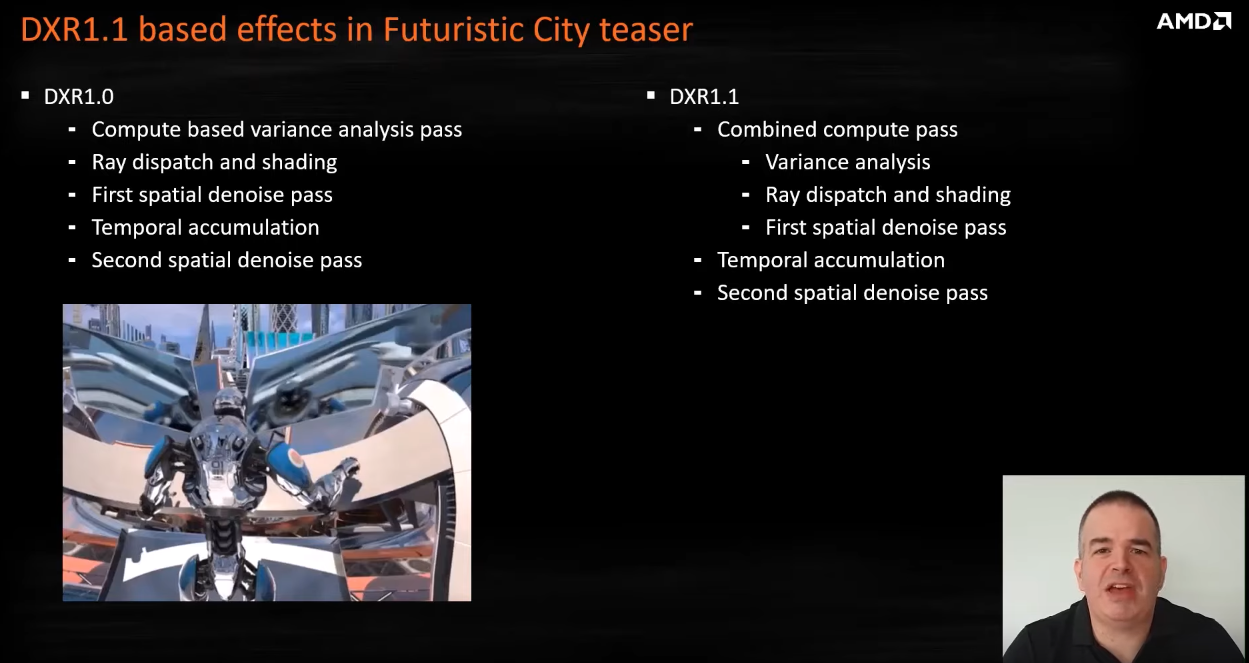That's funny considering that official MS recommendation is to use 1.0 capabilities (which are a part of 1.1 now btw so saying that 1.0 is "crap" means that 1.1 is also "crap" in like 90% or so) when you're actually doing a lot of RT and use inline trace ray when you're doing just a little of it.
It's funny that you assume that Microsoft speaks for every hardware vendor out there so here's the important disclaimer about Microsoft's recommendation:
The basic assumption is that scenarios with many complex shaders will run better with dynamic-shader-based raytracing. As opposed to using massive inline raytracing uber-shaders. And scenarios that would use a very minimal shading complexity and/or very few shaders might run better with inline raytracing.
Where to draw the line between the two isn’t obvious in the face of varying implementations. Furthermore, this basic framing of extremes doesn’t capture all factors that may be important, such as the impact of ray coherence. Developers need to test real content to find the right balance among tools, of which inline raytracing is simply one.
It's also funny that you guys assumed that inline ray tracing was somehow inherently tied to "simple shaders" when "complex shaders" can be implemented with inline ray tracing too so it doesn't make a difference to the visual feature set either way.
Case in point, inline ray tracing is better on AMD hardware with either 'simple' or 'complex' shaders so a massive uber-shader for ray tracing is the way to go for AMD.


